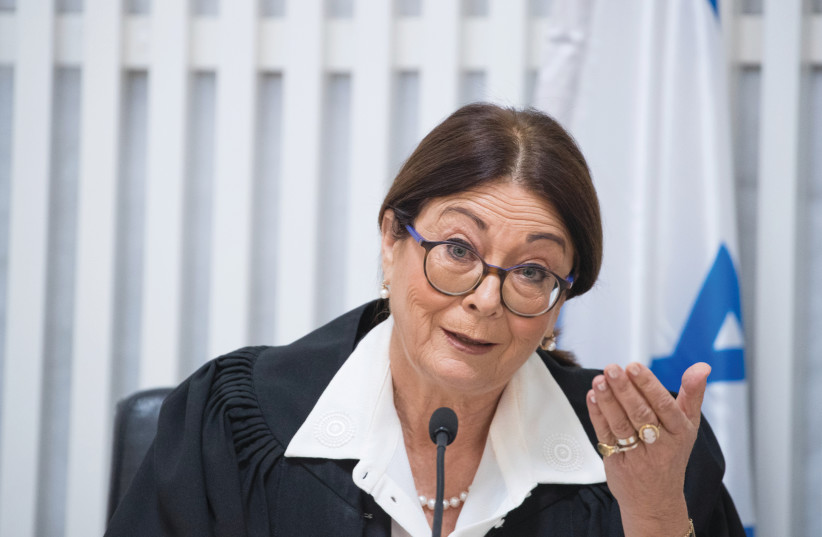The High Court of Justice on Monday strongly hinted it would support the IDF and Attorney-General Avichai Mandelblit’s decision to close a probe into the IDF’s mistaken killing of four innocent Palestinian minors on a Gaza beach during Operation Protective Edge in 2014.
The incident occurred in view of a throng of journalists who copiously recorded the event and whose photos went viral.
Essentially, the IDF closed the case, saying reasonable but faulty intelligence that the area on the beach where the minors were was a headquarters for Hamas naval commandos had led to mistaken approval to fire on them from the air.
The key to the decision was the IDF viewed the order as a reasonable mistake in the fog of war and not a criminal act.
During Monday’s hearing, much of the debate revolved around how far the laws of war require the IDF or any other military to go to identify whether specific individuals, whose identity is unclear, are combatants or civilians.

Although the High Court agreed with Adalah – The Legal Center for Arab Minority Rights in Israel, which brought the petition to compel the IDF to issue indictments, that in a clearly civilian area, the IDF might have been obligated to check more than it did, the justices strongly suggested the military’s precautions were sufficient given the specific circumstances.
Adalah’s lawyer argued that the beach was a civilian area and carried obligations for the IDF to do a more thorough check of the four Palestinians who were seen from the air, but with insufficient resolution to establish whether they were combatants or civilians.
The lawyer cited other instances in which the IDF had delayed attacks and invested more surveillance resources to definitively establish the identities of persons in a civilian area before approving an attack.
But High Court President Esther Hayut, Justice Yitzhak Amit and Justice Alex Stein all seemed to accept that once Hamas naval commandos had, in fact, utilized the area the day before, it had shifted from a civilian defined area to a combatant defined area, meaning that the military could order an attack based on reasonable intelligence, even at a lower level of certainty.
In 2018, The Jerusalem Post received rare access and revealed significant aspects of the IDF’s internal case files of the July 16, 2014, attack in which the military fired two missiles, with a short interval between each one, killing the four unarmed Palestinian minors.
The access included raw transcripts of 16 of the 20 IDF personnel under interrogation (four transcripts were omitted based on national security claims) without a spokesman to “clean up” their testimonies.
Even the 16 transcripts were semi-censored based on national security claims, but a distinct and newly revealed picture emerged.
Earlier, The Intercept, a US-based news organization, had gained access to the IDF’s internal file, but it was unclear if it had fully reviewed the raw material.
A key point was whether the IDF team involved in the strike had harbored doubts at any point.
Questions pertained as to whether the IDF had doubts, including about the identity of those being attacked, the scope of the area in which attacking the four minors was allowed and whether the staff had acted sufficiently in resolving those doubts.
After a full review of the file – including regarding those issues, the statements of IAF witnesses 16 (Captain “A”), 17 (Captain “M”) and 18 (Major “S”) – it emerged that a major source of confusion was the interrogation itself.
What did the interrogation itself look like?
Overall, though it was slow-moving, the IDF did an impressive job interrogating 20 witnesses from several disparate operations, intelligence analysis and intelligence operations units spread out in different parts of the country. The investigation was not just about the one person who pushed the button to fire the missiles.
The failure to ask standard follow-up questions in the interrogation left some issues open to interpretation. Nevertheless, the overall thrust of the testimonies appeared to be that both what The Intercept called a drone strike team and the intelligence team were broadly convinced that the four minors were Hamas naval commandos regarding both missile strikes.
The High Court appeared to signal that as long as the overall view in the IDF was that the judgment that the area was one used by Hamas commandos in real time was reasonable, it would likely not intervene.
It was unclear when the High Court would issue its decision.
